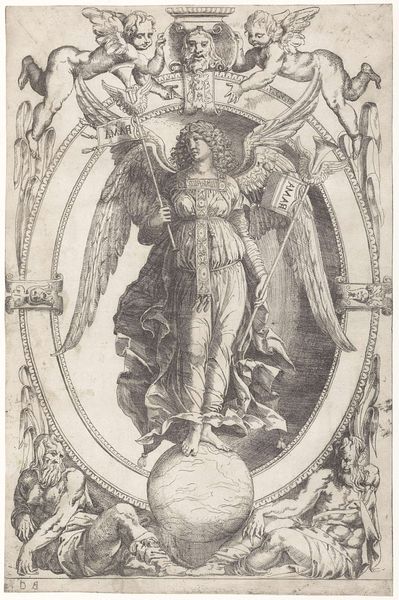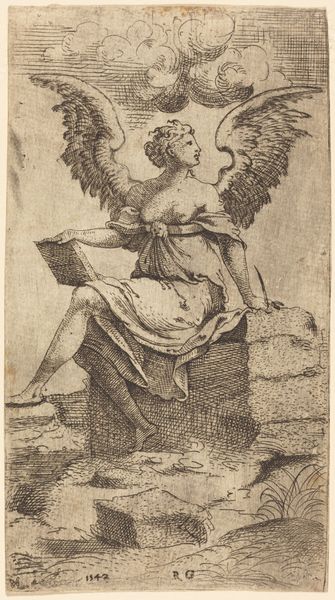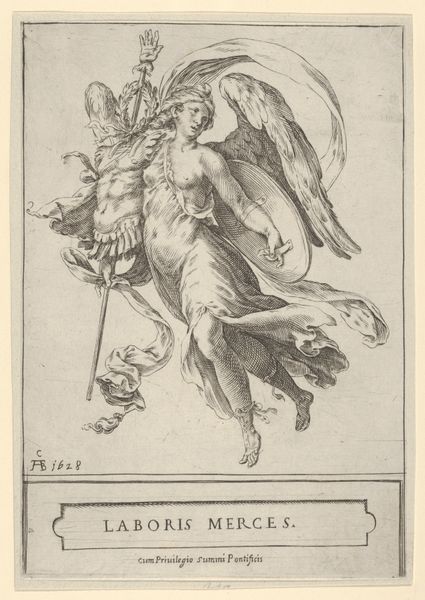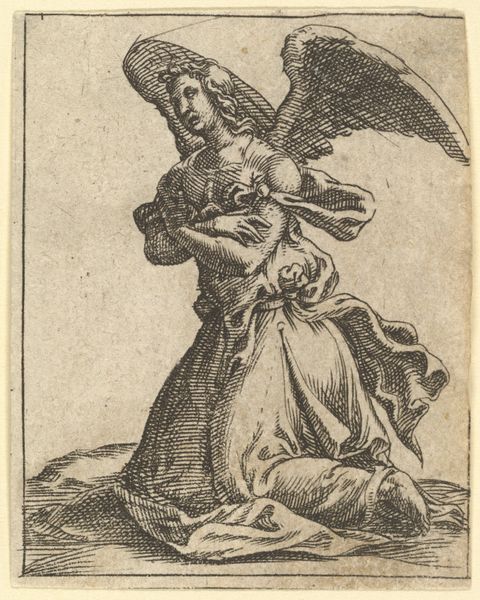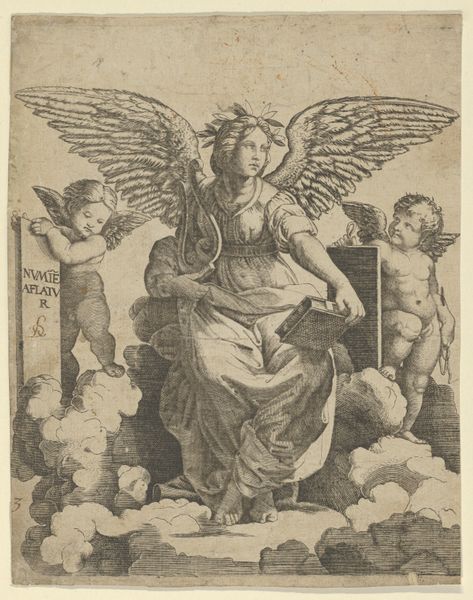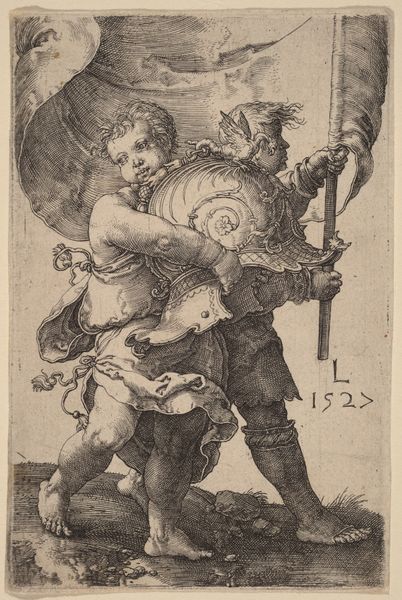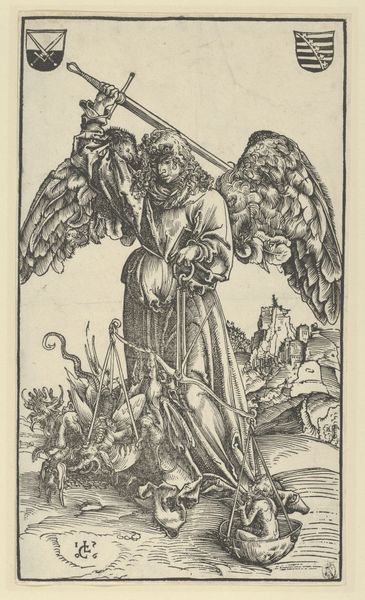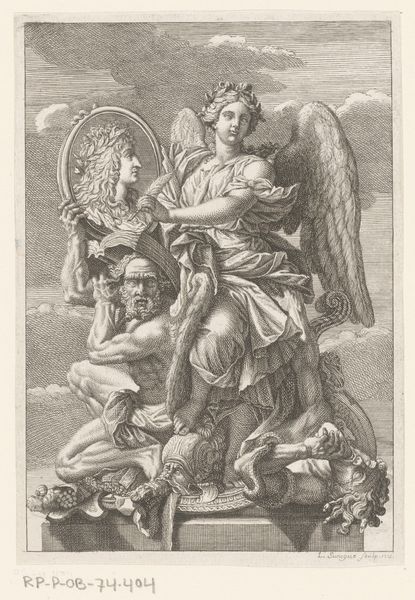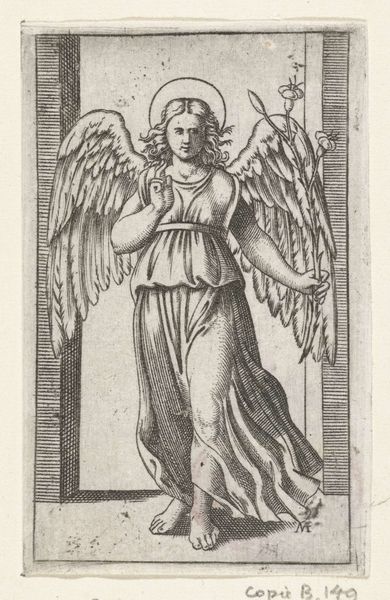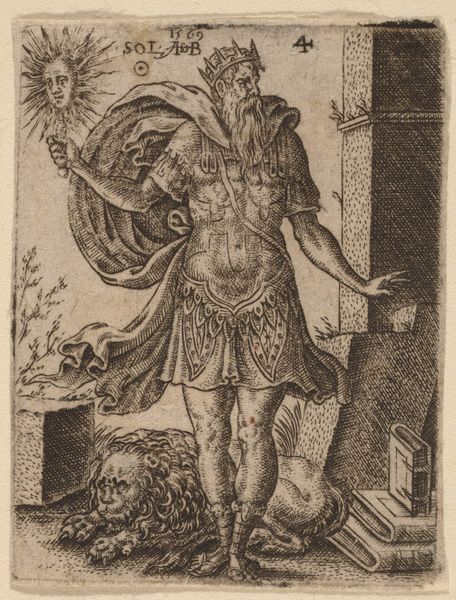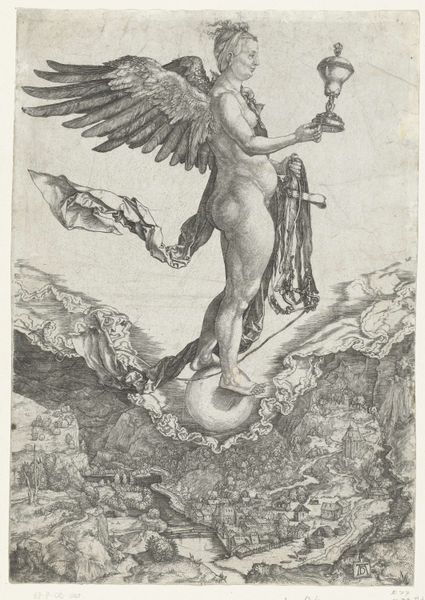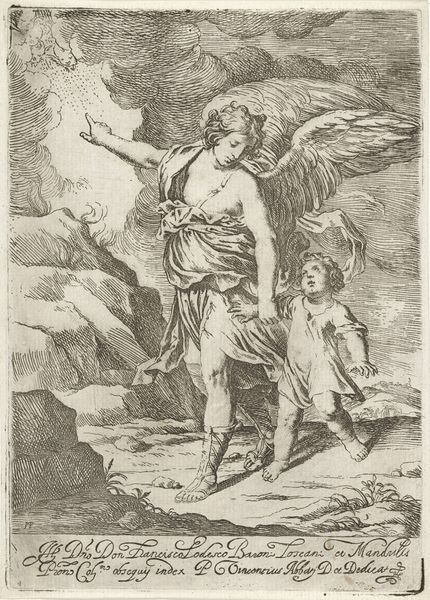
drawing, print, engraving
#
drawing
#
allegory
# print
#
figuration
#
northern-renaissance
#
engraving
Dimensions: Sheet: 2 3/4 × 1 15/16 in. (7 × 4.9 cm)
Copyright: Public Domain
Curator: Here we have Heinrich Aldegrever’s engraving, “Diligence, from Virtues and Vices,” created in 1549. It's part of a series exploring moral concepts, a popular theme in Northern Renaissance art. Editor: My immediate reaction is that there's something unsettling about this depiction. Despite the title, the winged figure looks burdened, almost as though diligence is a form of constraint rather than liberation. Curator: That's a valid observation. Aldegrever, working in a time of religious and social upheaval, often embedded complex social commentary in his work. Notice the figure is both winged and shackled at the ankles. Editor: Precisely. The shackles negate the wings, visually trapping "Diligence." Also, the whip she carries...is that to lash herself, or others? This challenges a simplistic view of virtue. Diligence can turn into relentless and inhumane enforcement. Curator: The visual vocabulary he employs is fascinating. Aldegrever creates an image of virtue bound and driven. Remember that this print was created during the Reformation, and its visual critique can also allude to forced labor in social institutions of the time. Editor: I hadn't considered the contemporary institutions, but this definitely feeds my thought. Consider too how sight plays into it: Diligence is averted. It avoids connection and sees nothing beyond the narrow task. It creates an unnerving focus and lends credence to it becoming vice. Curator: Yes, that brings us to the dichotomy that I believe is a key point. Aldegrever does seem to be pointing out the danger inherent in blindly pursuing virtue, even something as seemingly positive as diligence. Editor: This engraving serves as a powerful reminder that virtues, when taken to extremes, can become vices, thus corrupting one's very ideals. A sobering piece to contemplate, definitely more than a mere platitude. Curator: Indeed. Aldegrever offers a more nuanced and even critical look at the accepted values of his time, prompting us to consider the full implications of the ideals we uphold, thus serving an important role in an art historian's considerations.
Comments
No comments
Be the first to comment and join the conversation on the ultimate creative platform.
